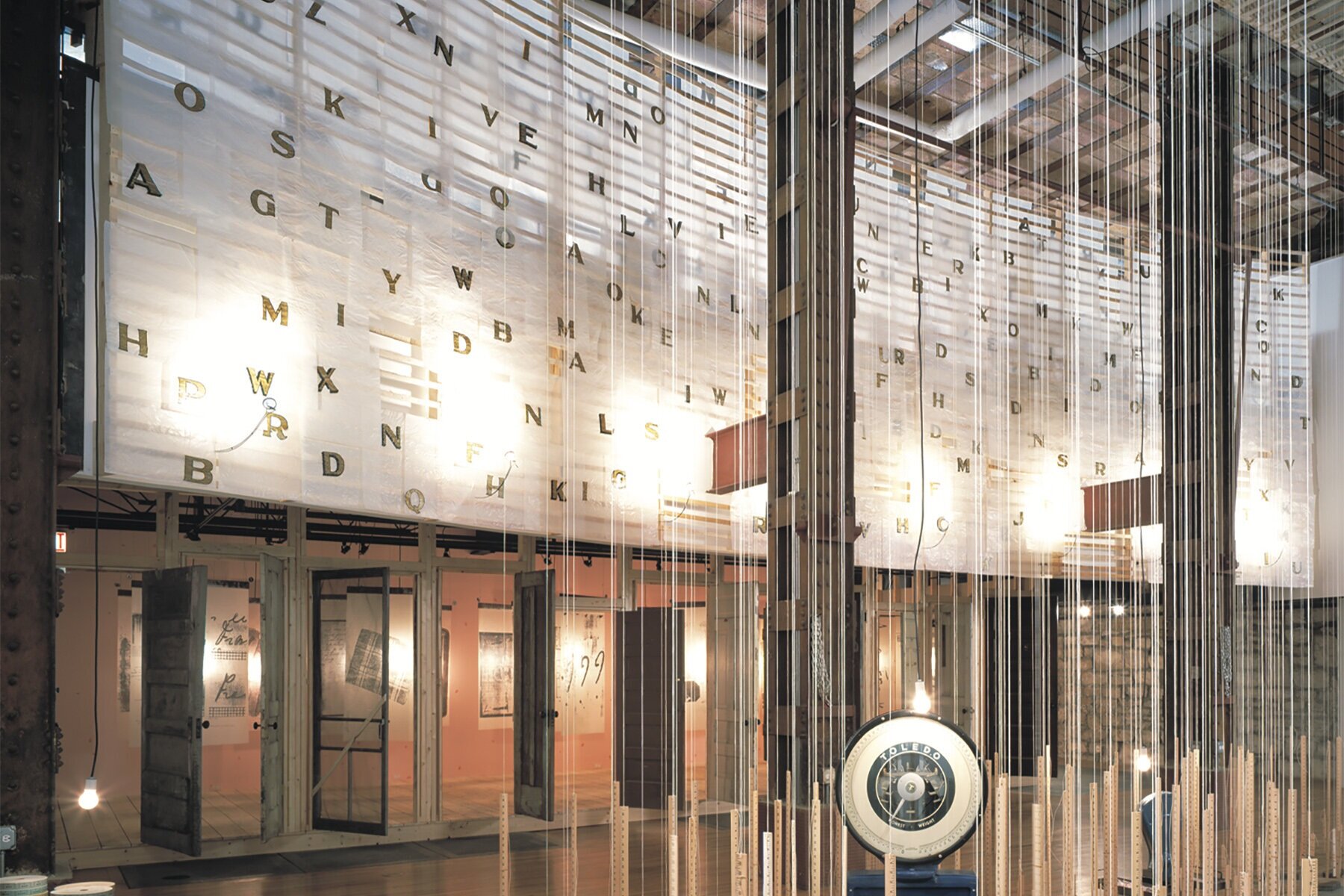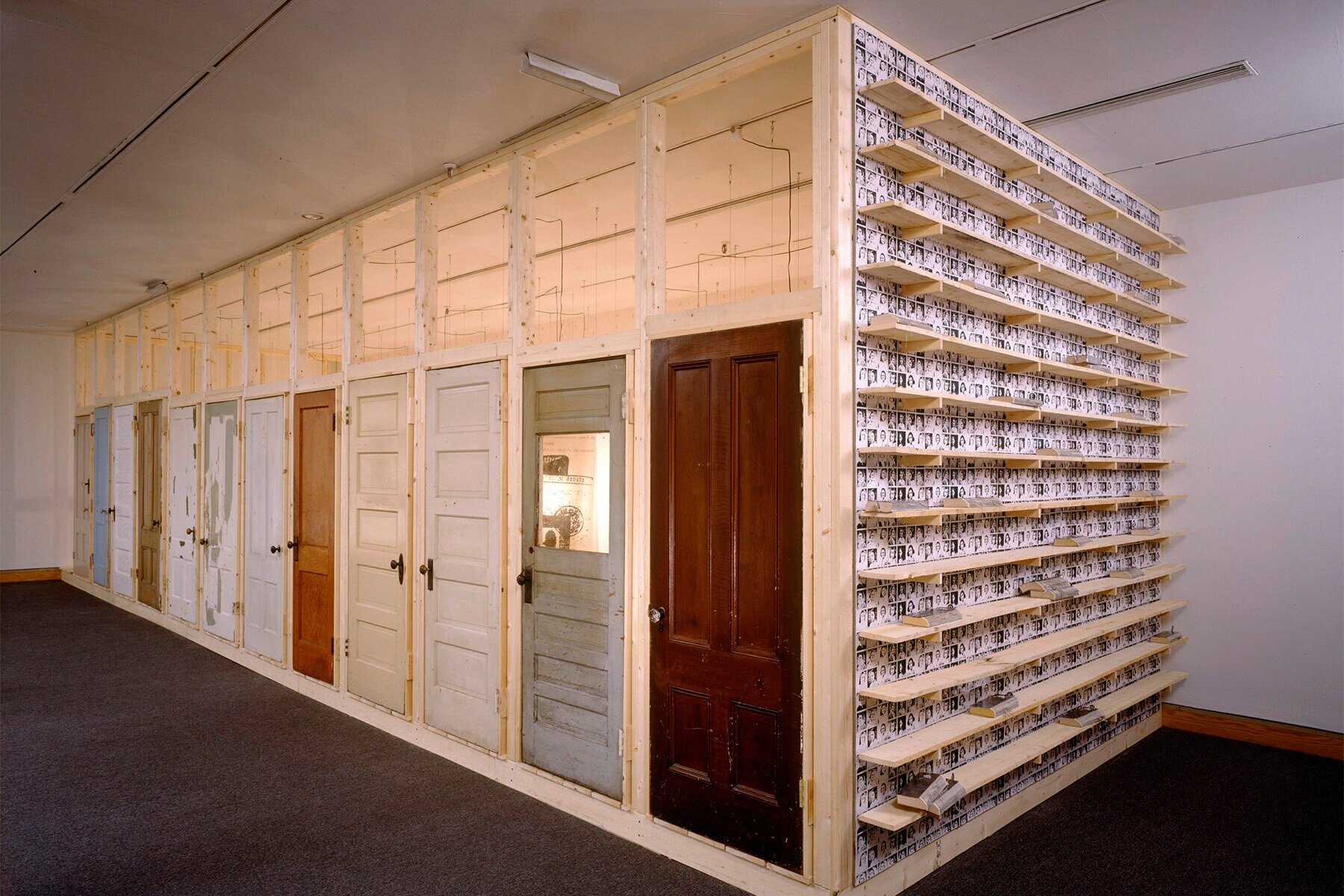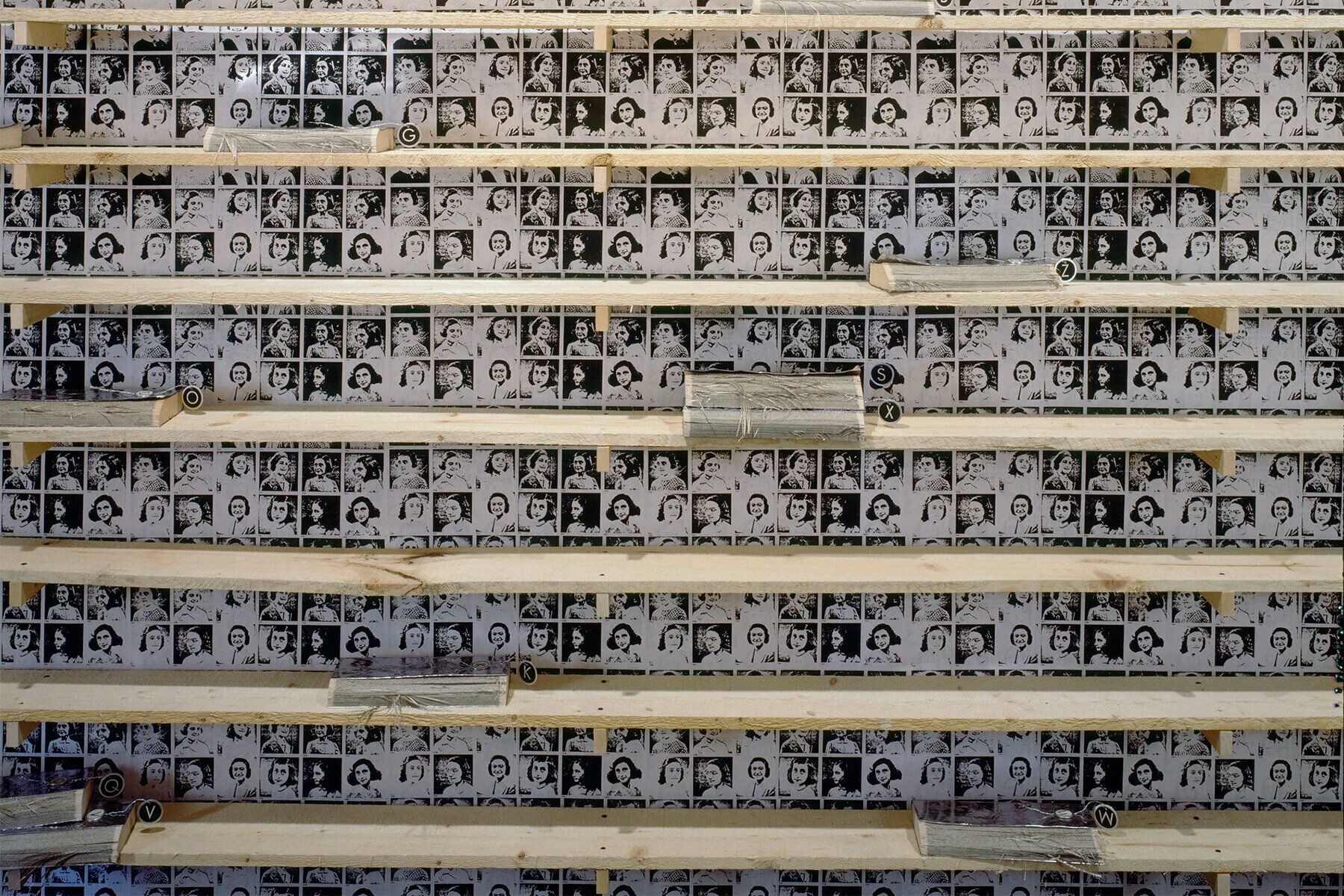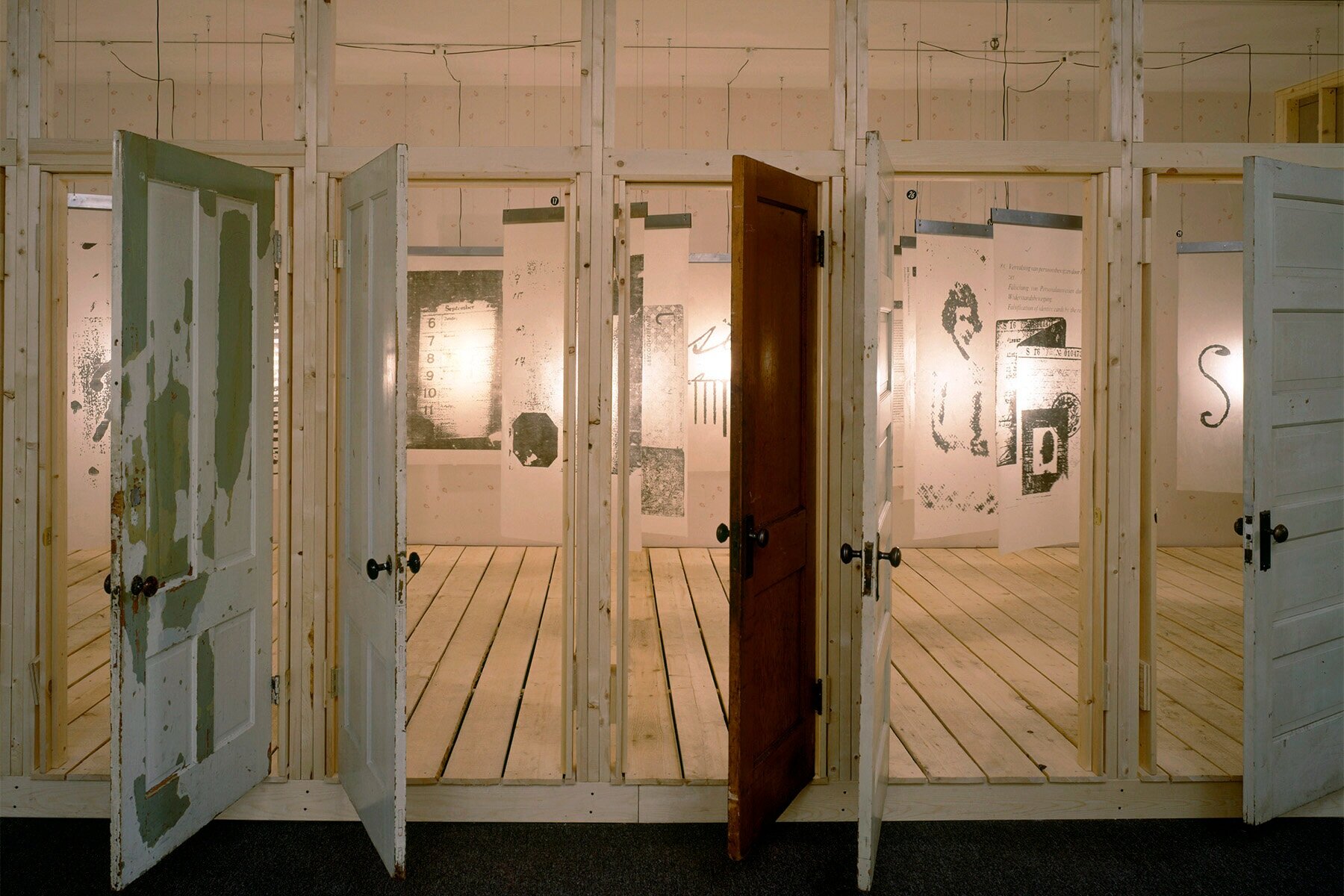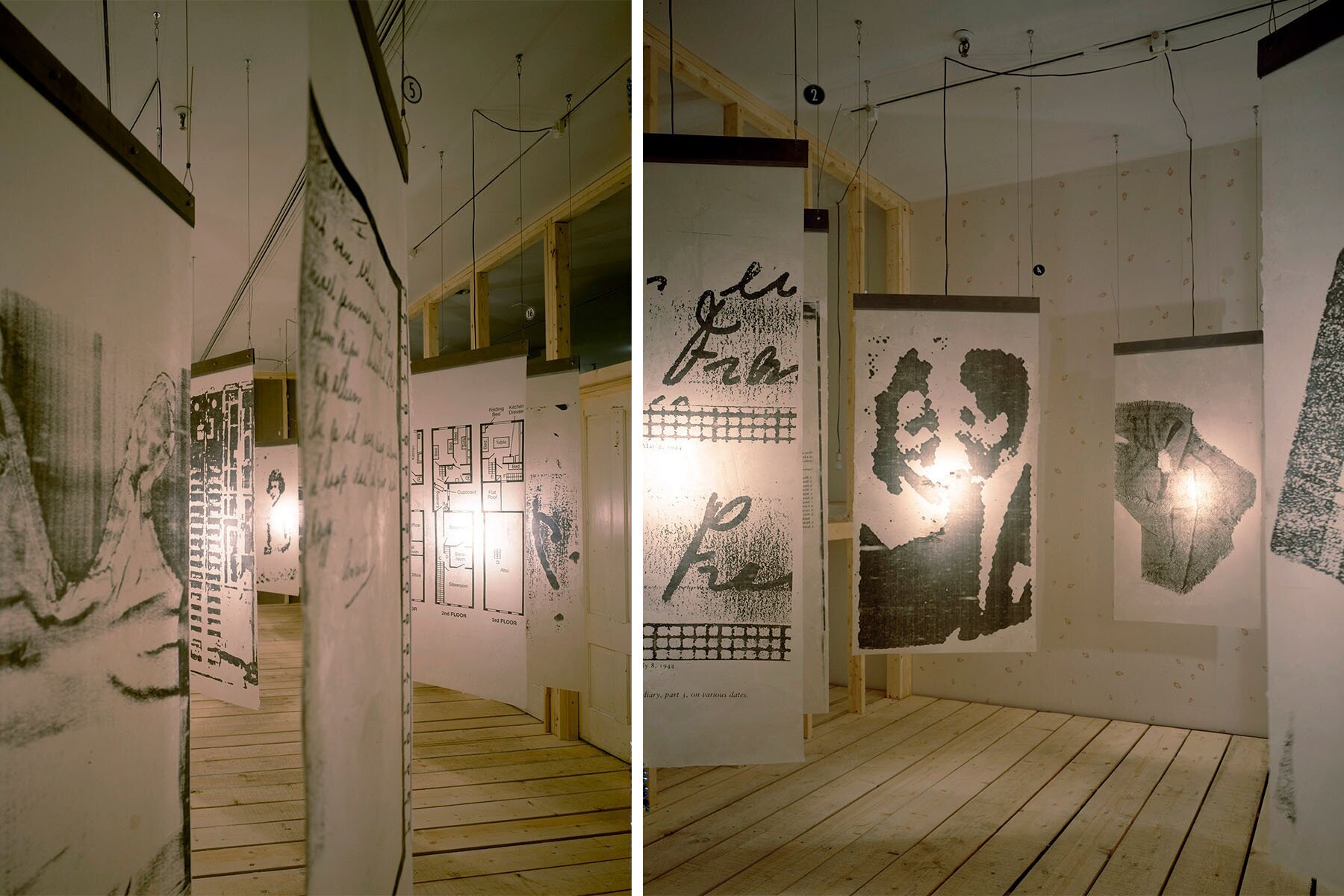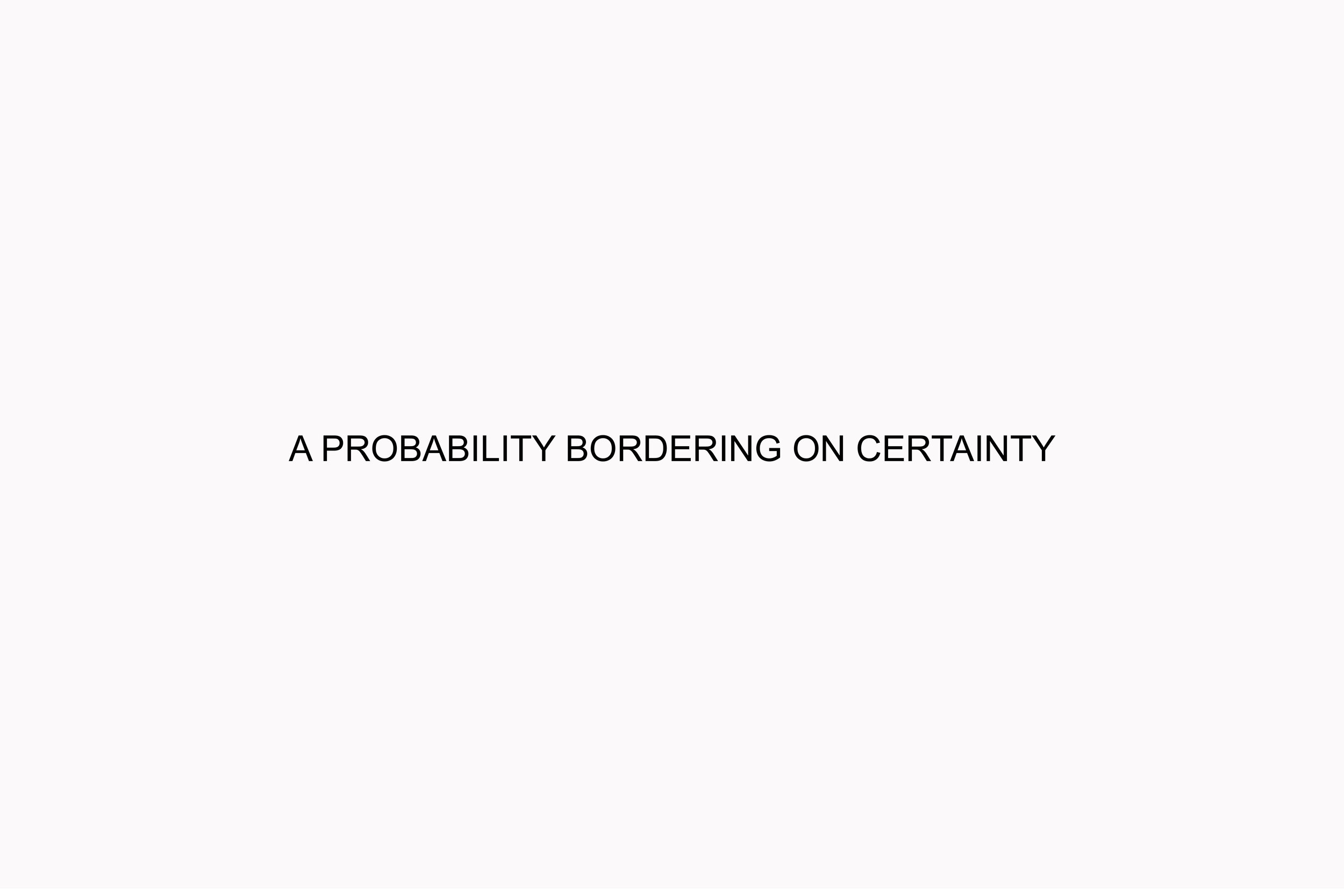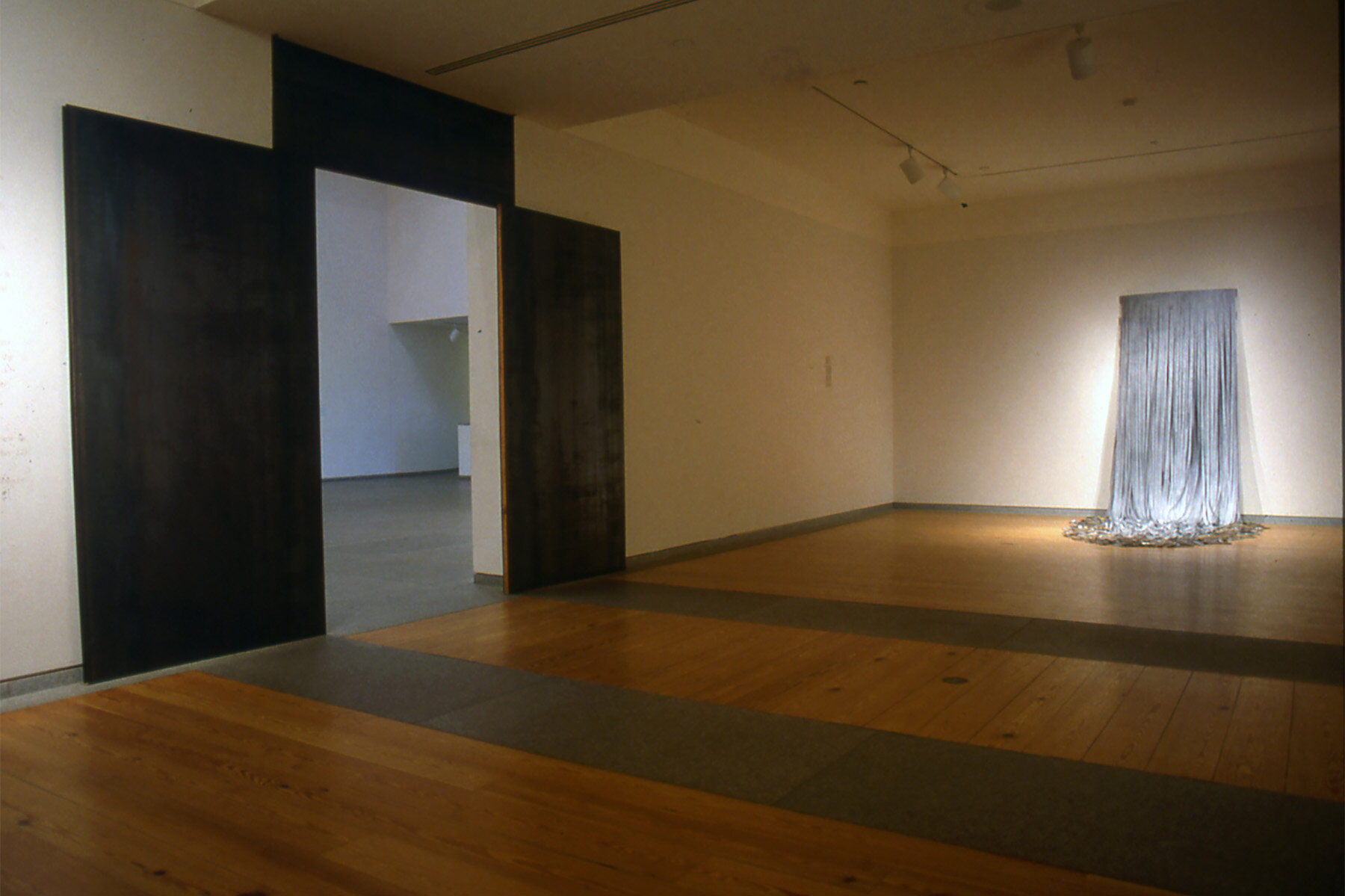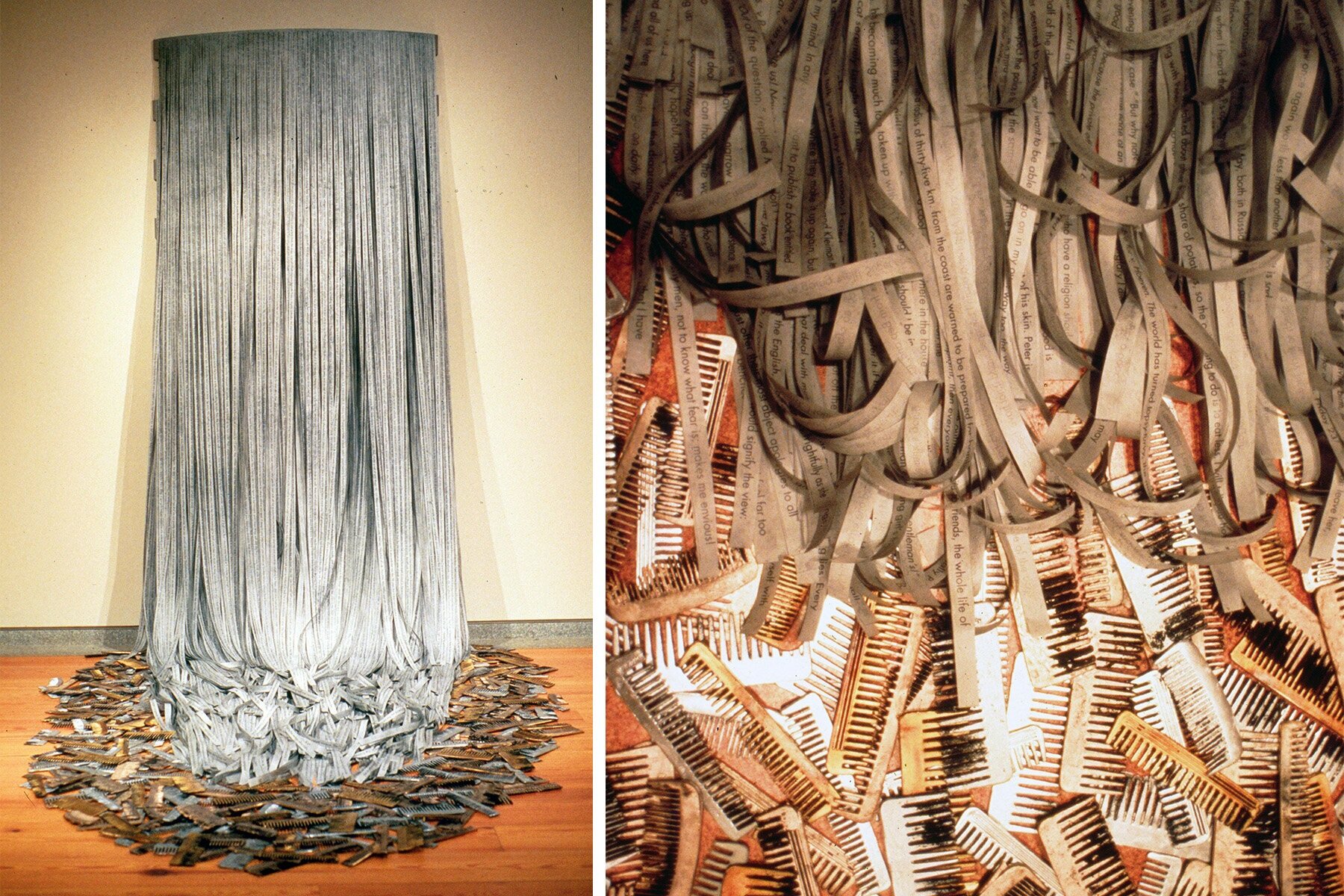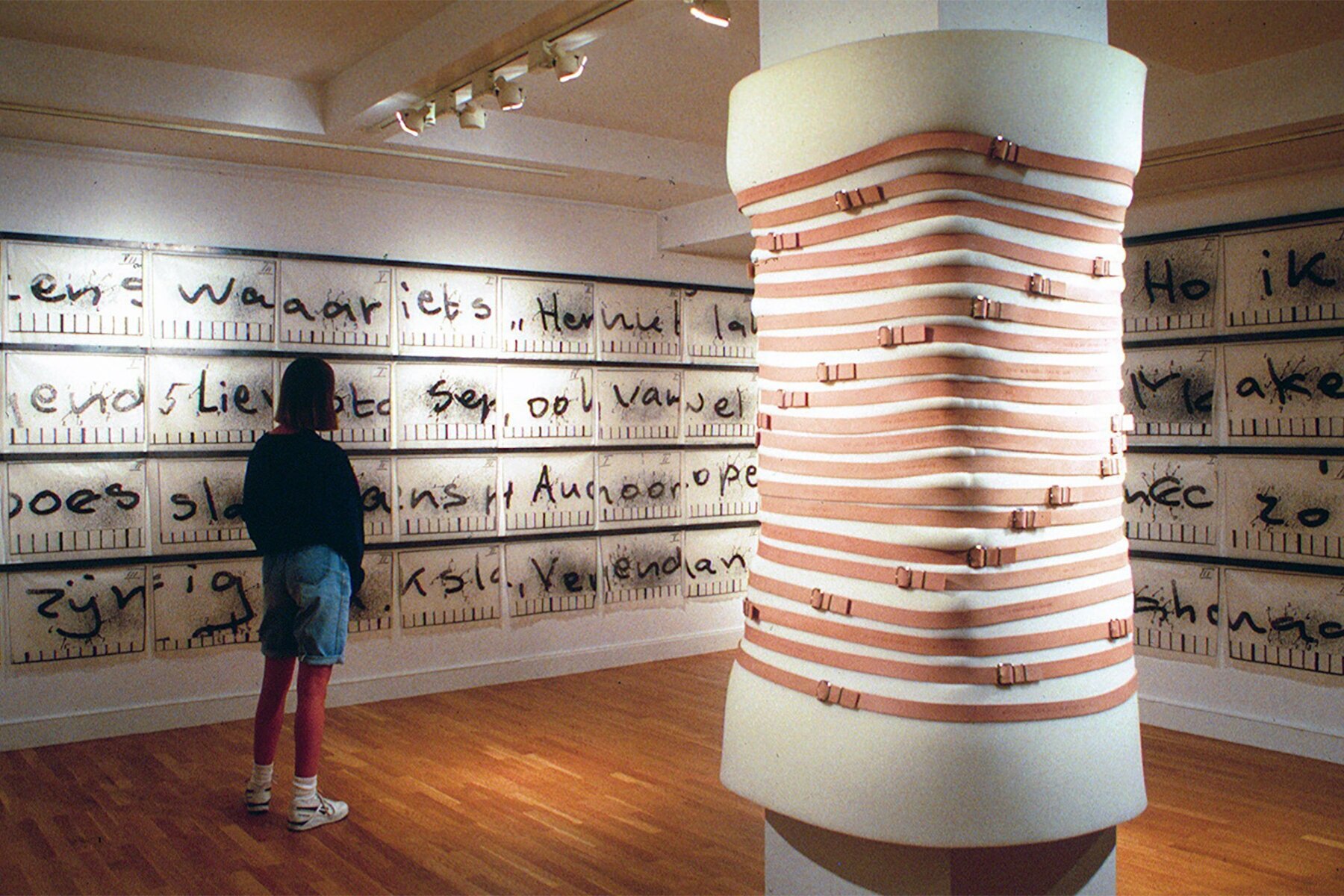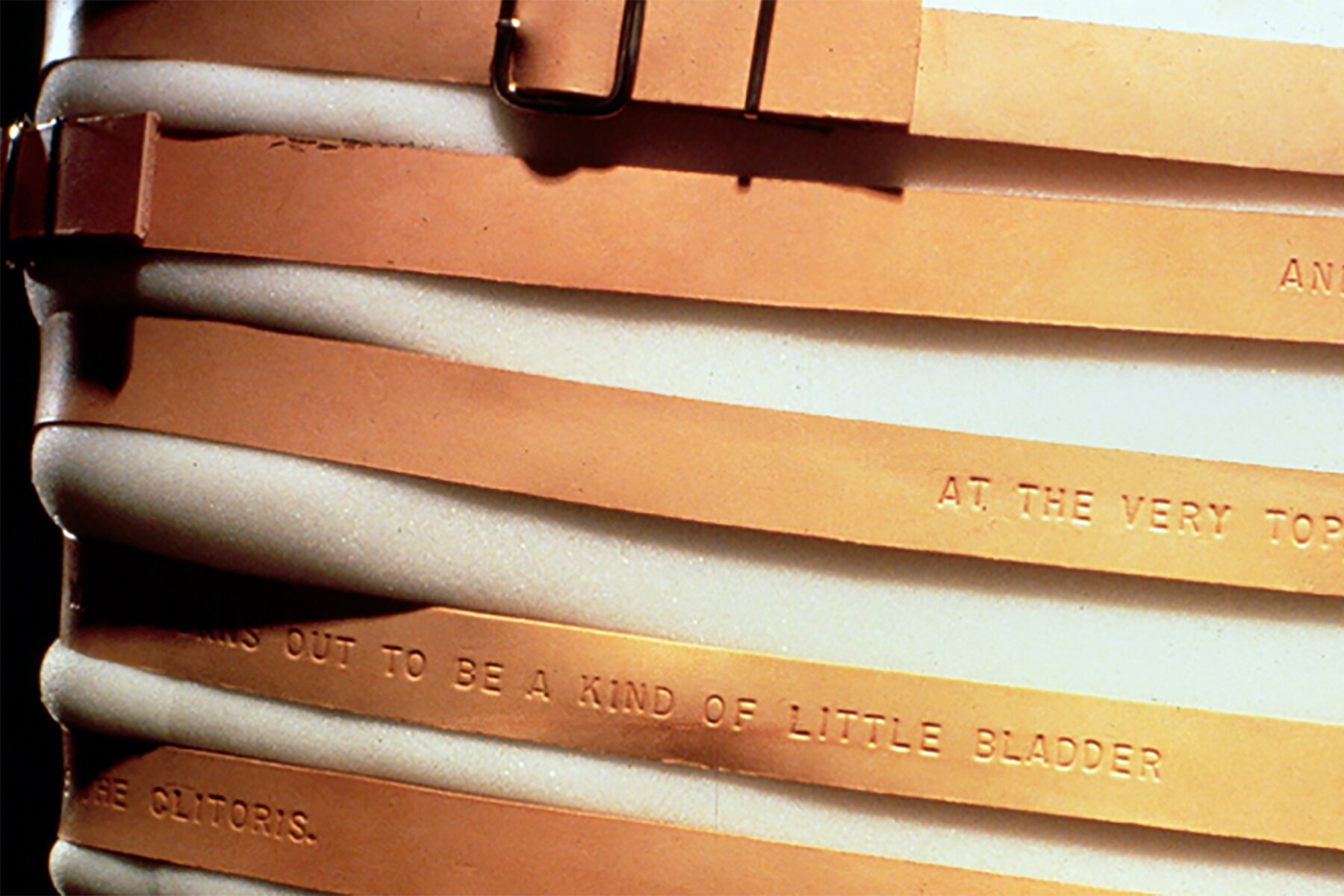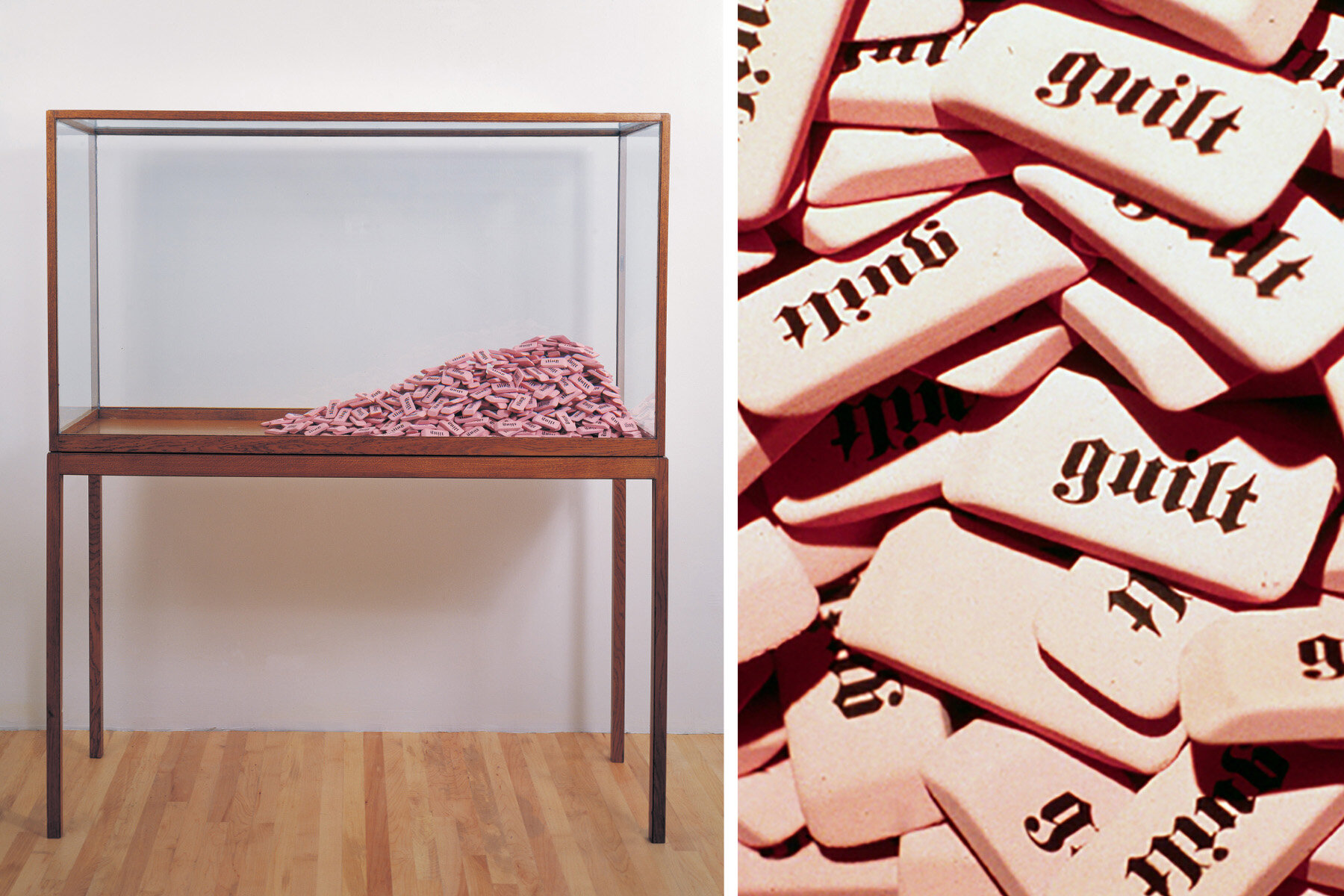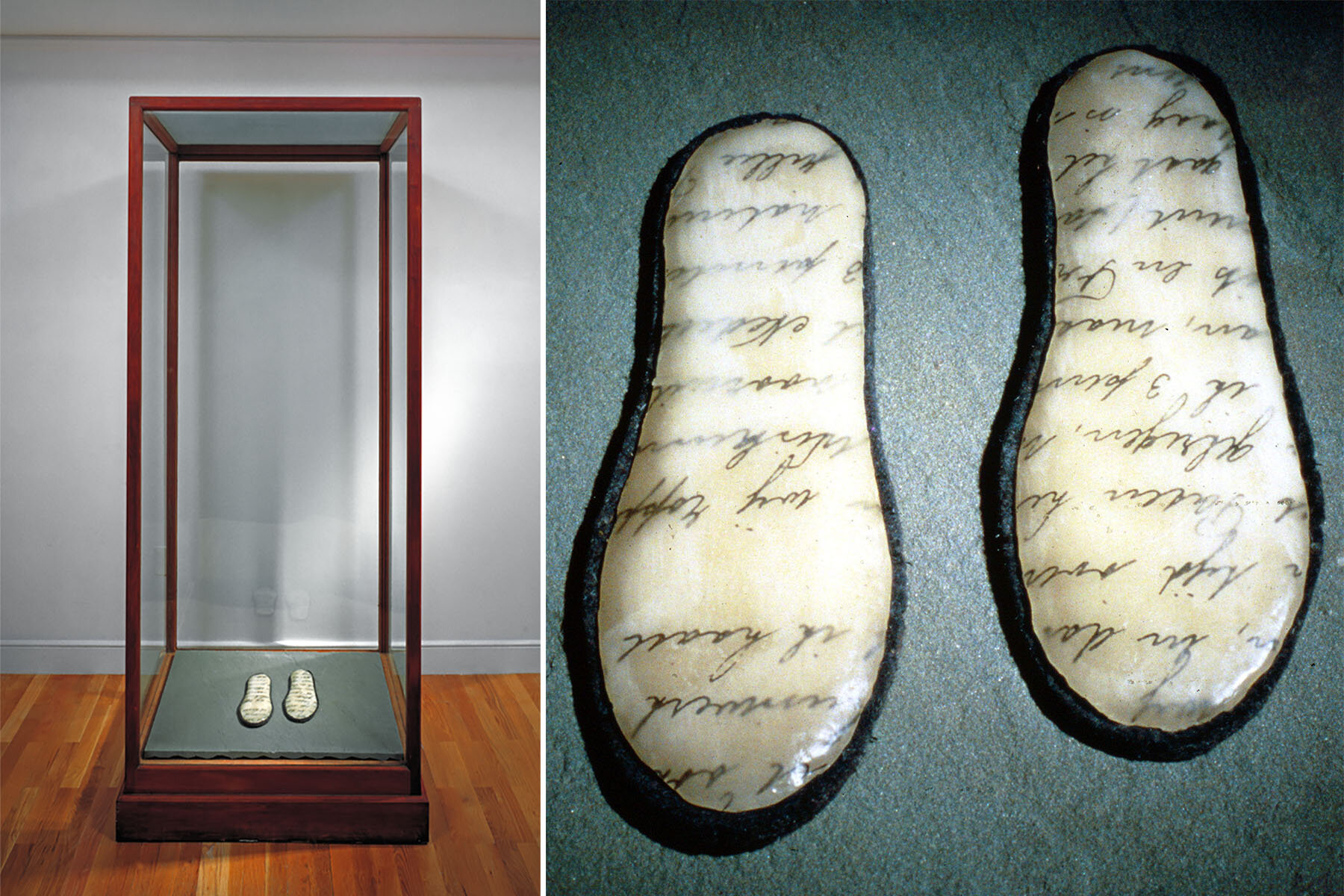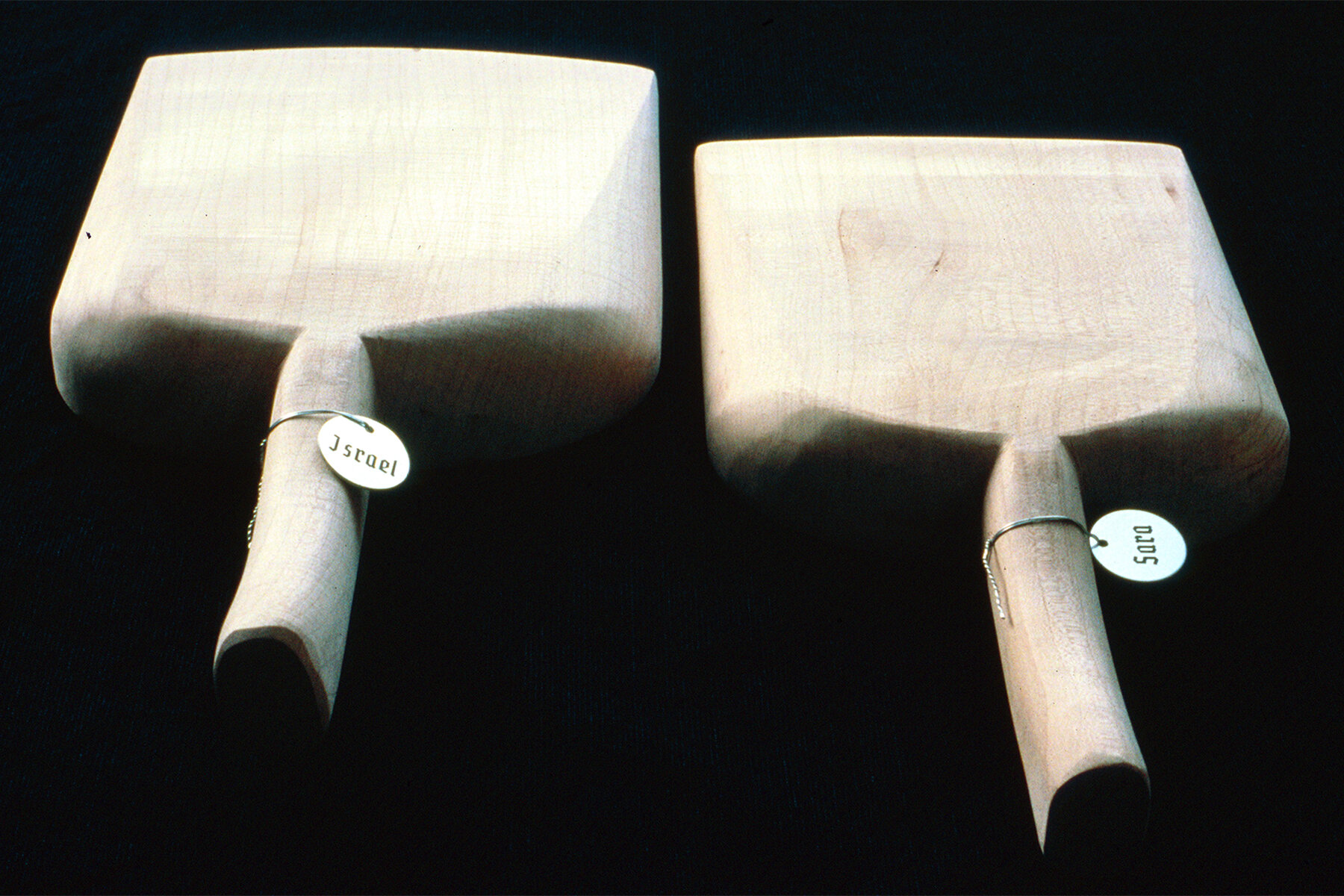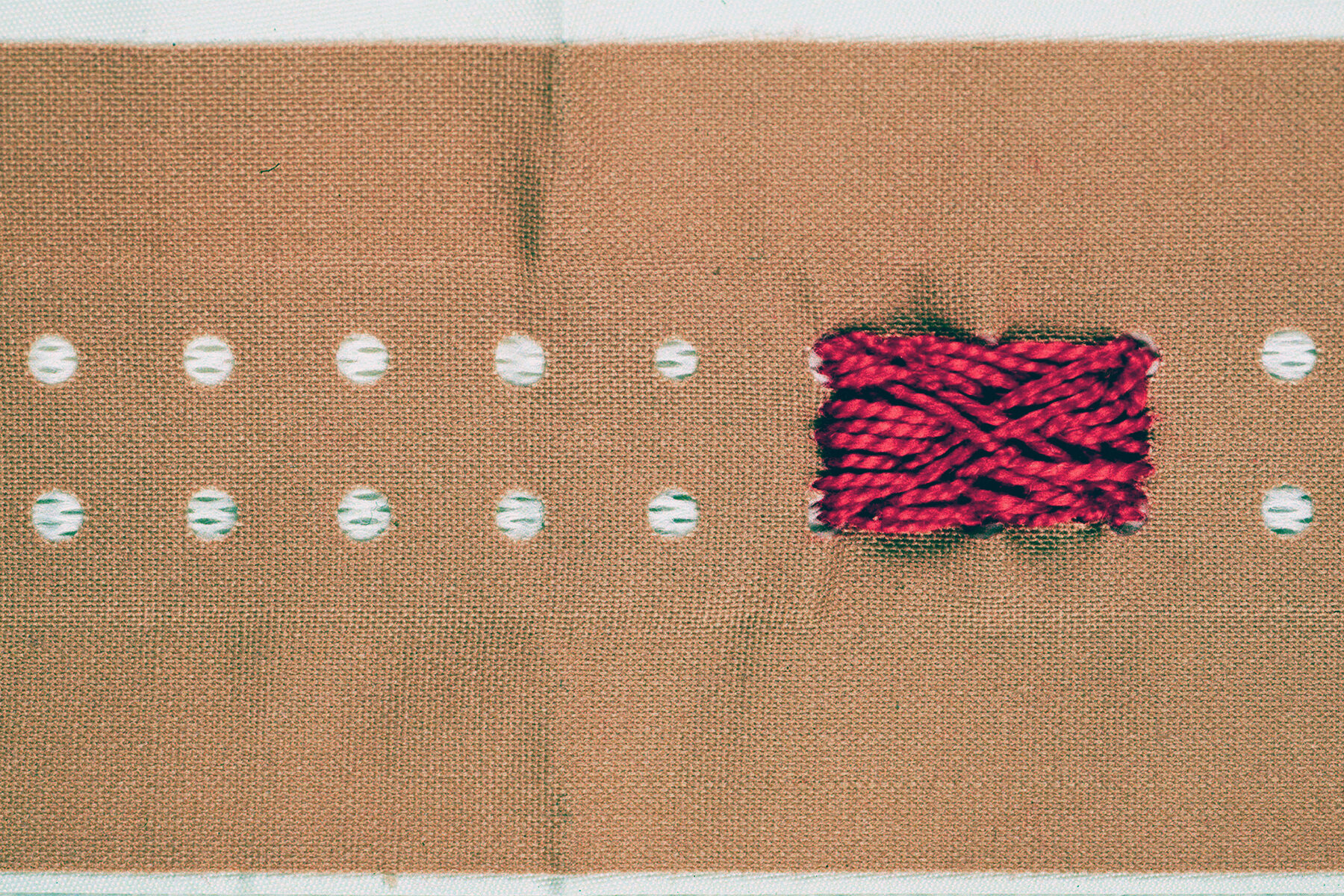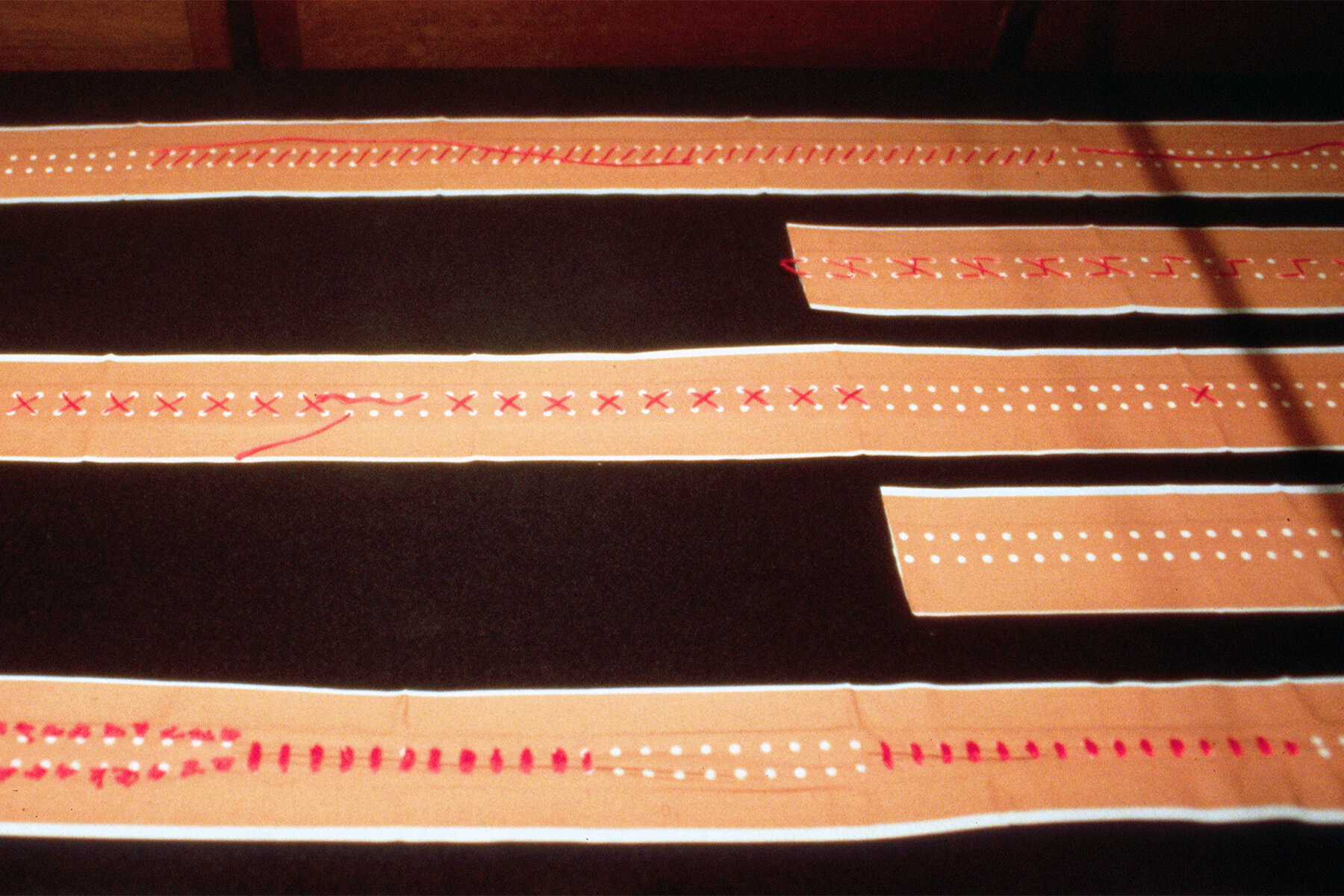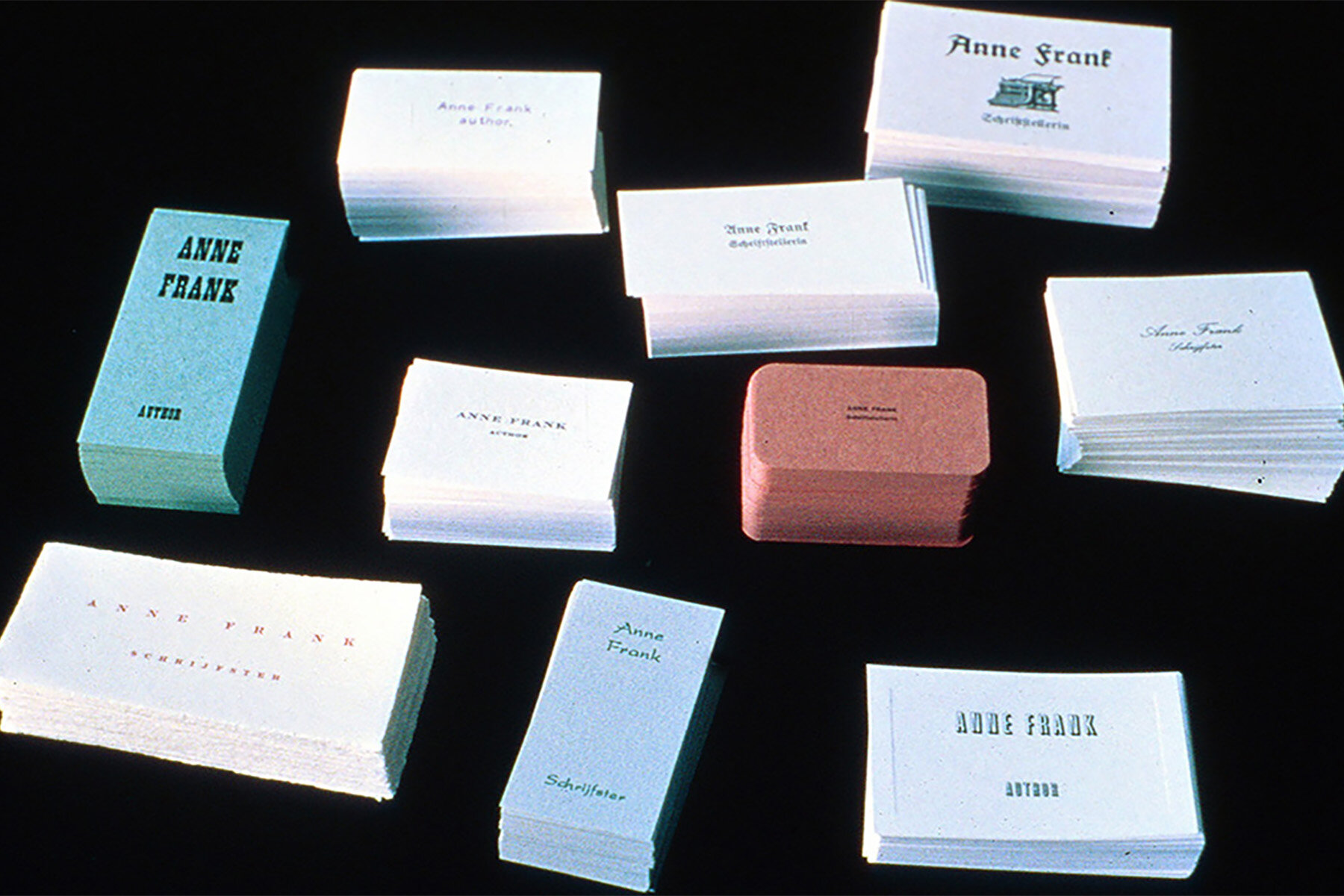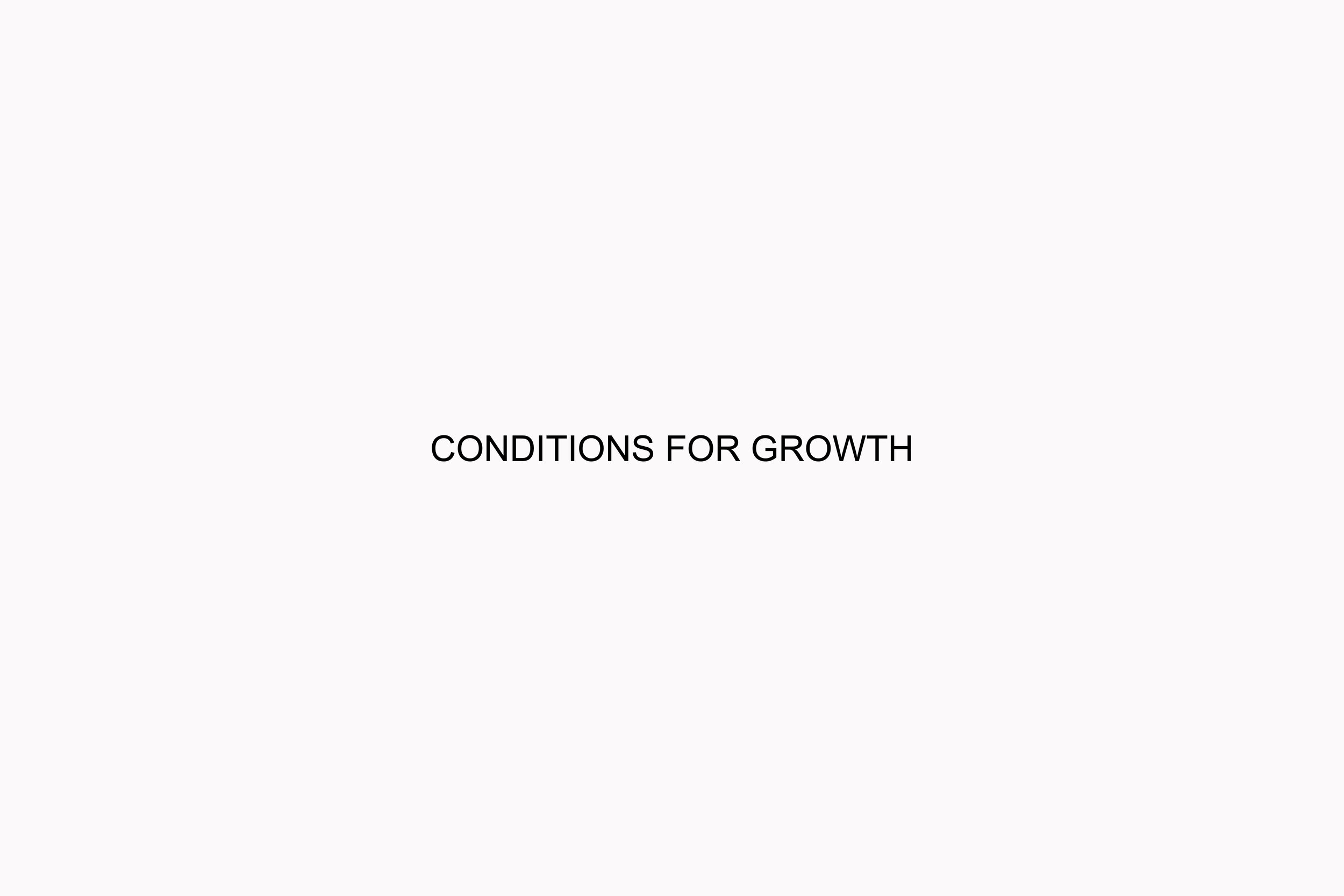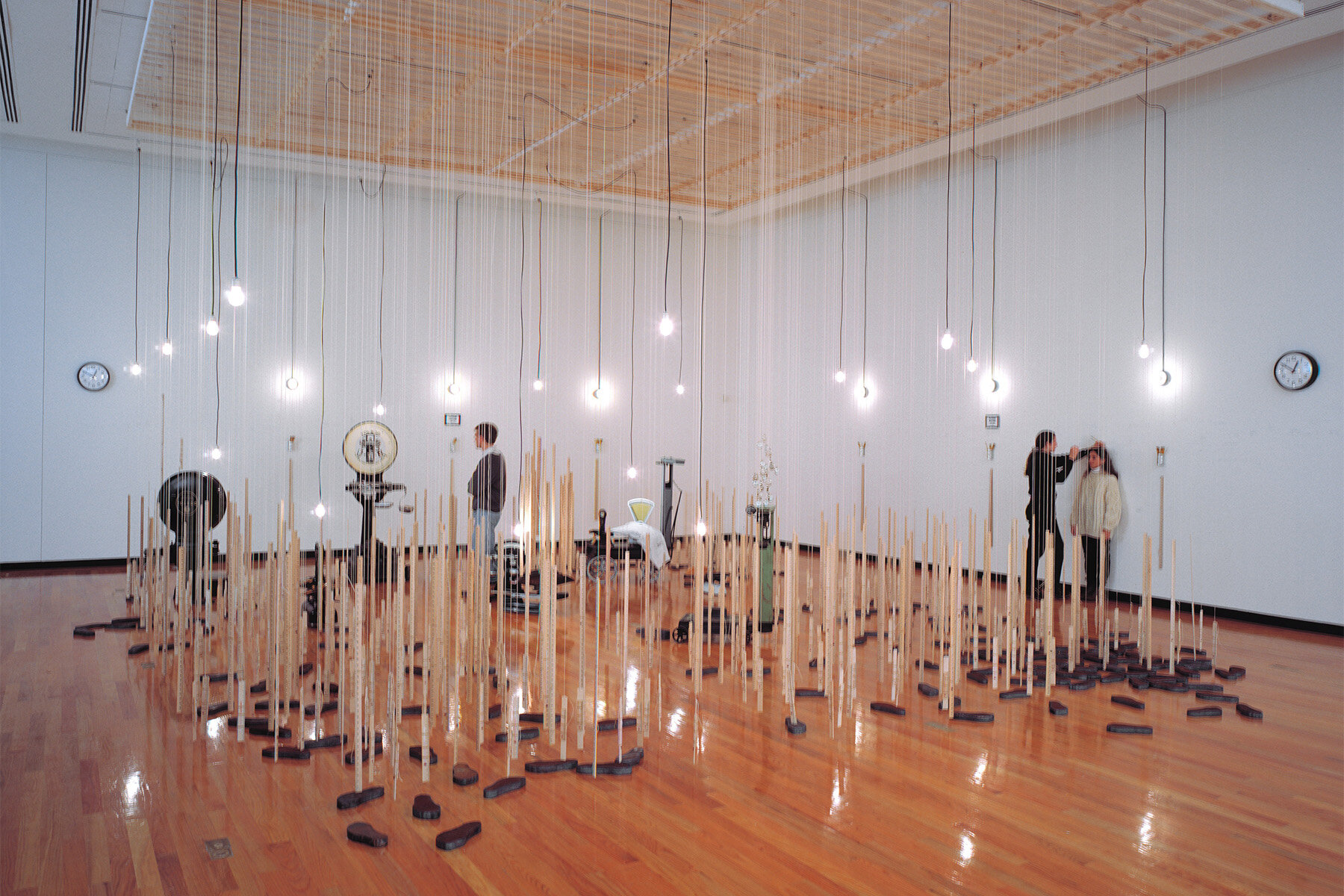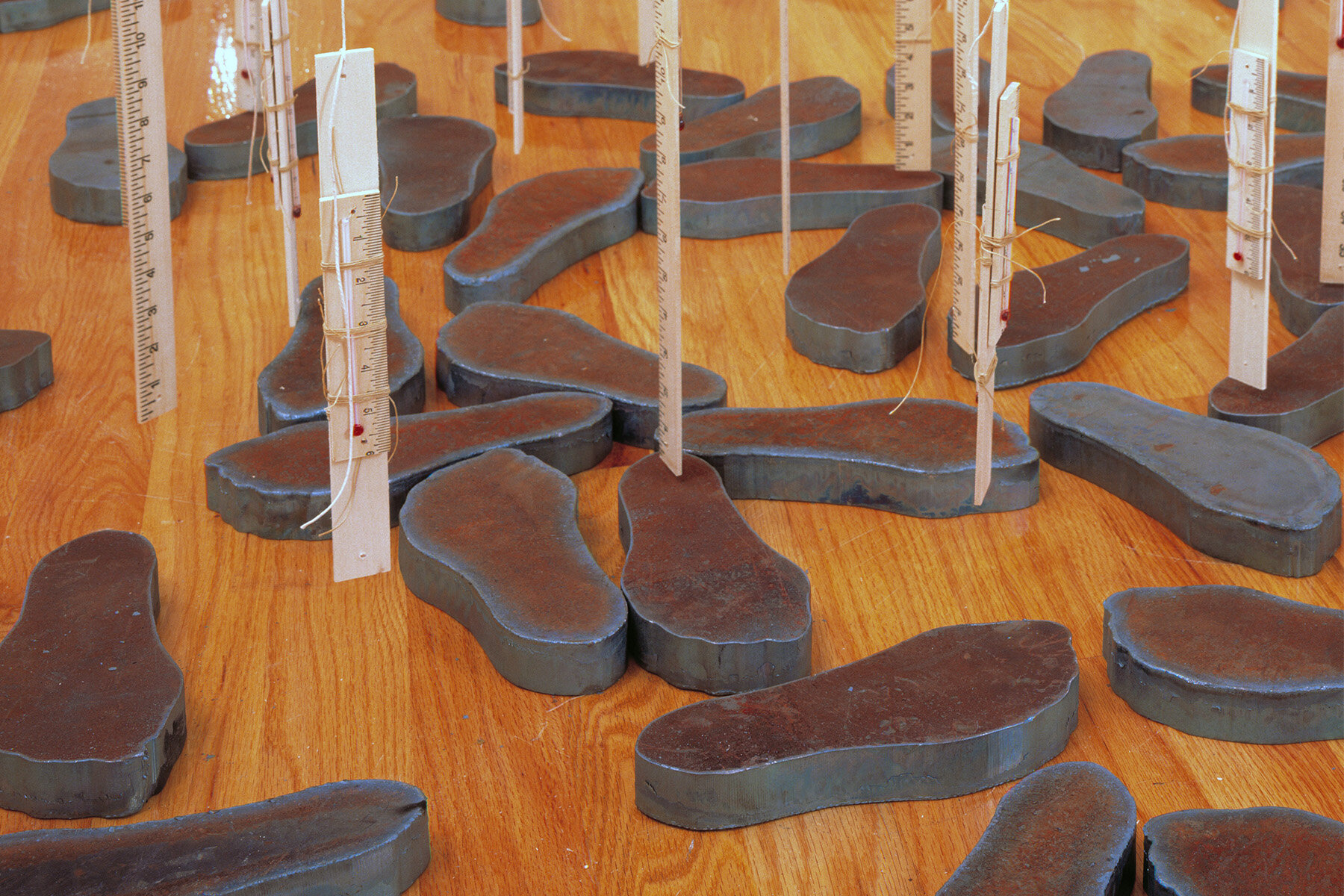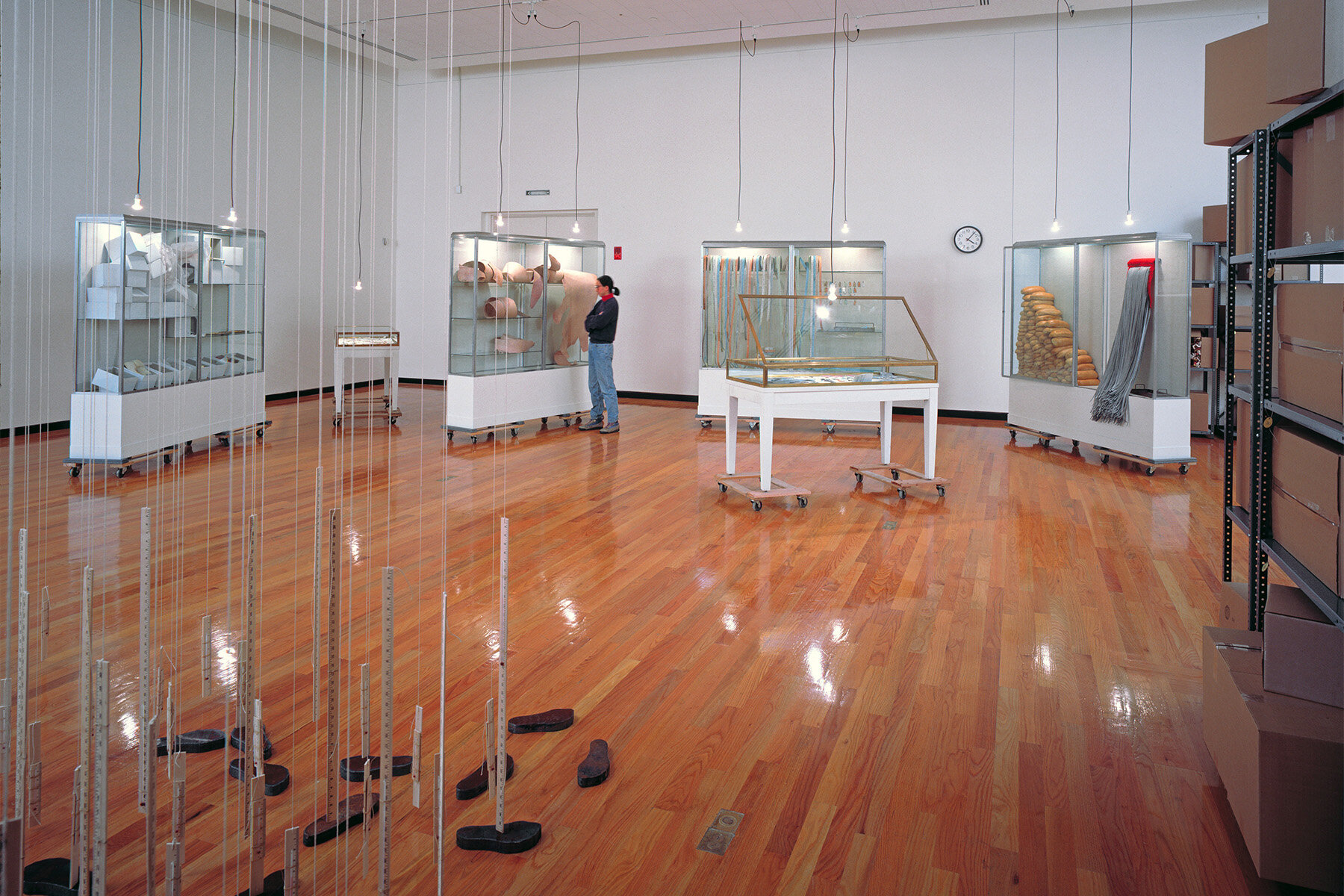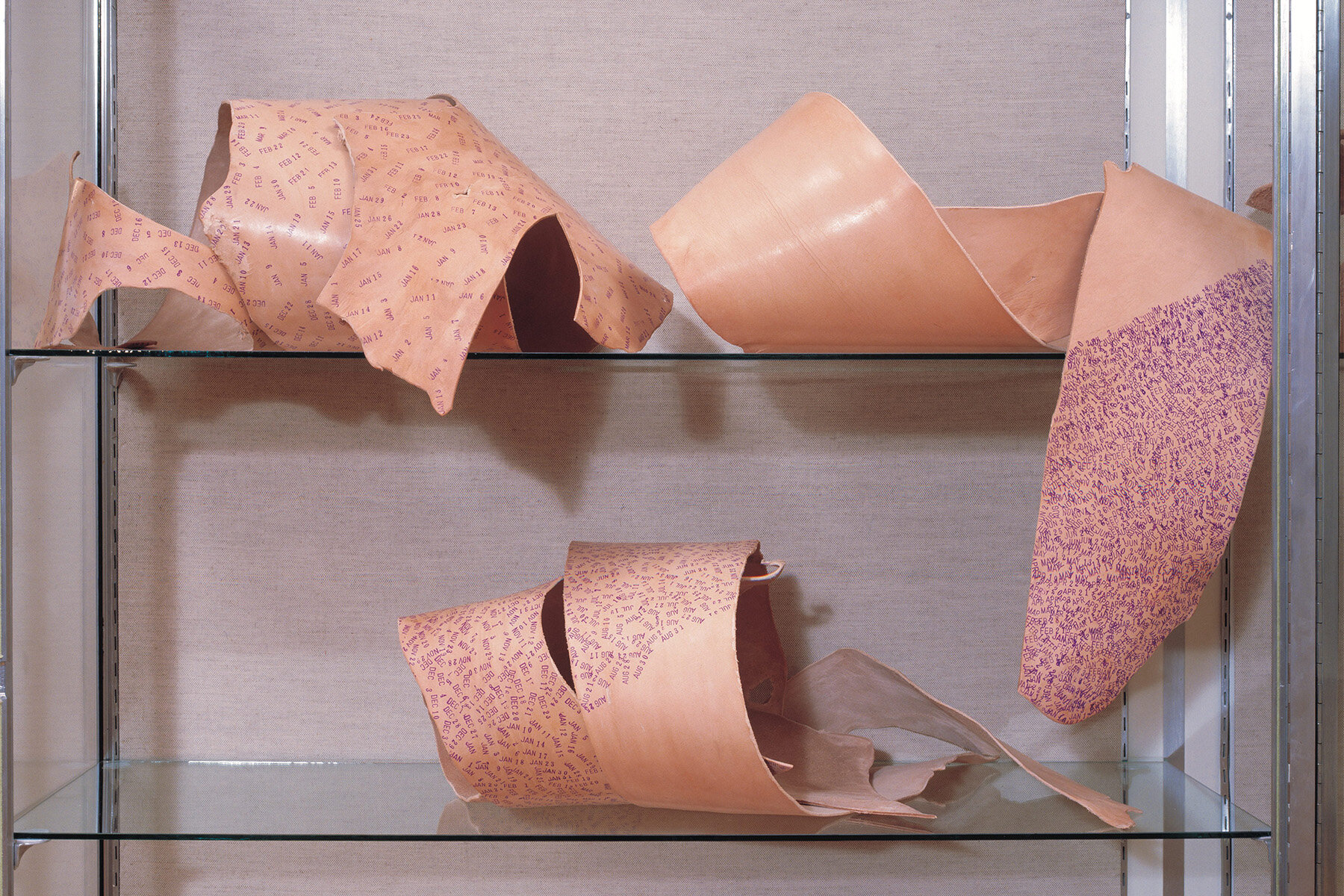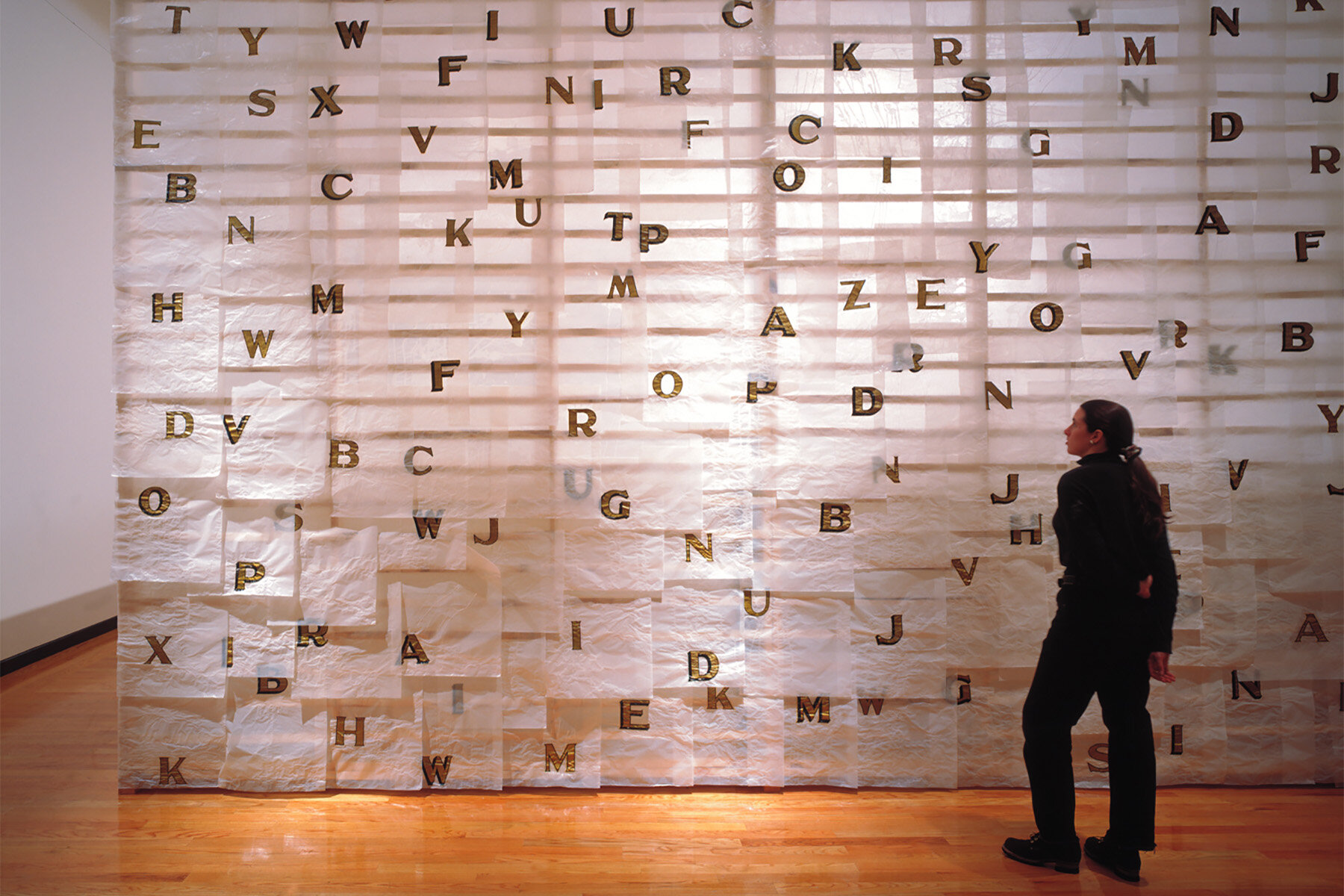Anne Frank Project
About the Project
Installation in three parts:
Partial Index
A Probability Bordering on Certainty
Conditions for Growth
Essay Excerpts
The Anne Frank Project is a three-part installation that transforms the way history and artifacts are conventionally considered. The installation questions the social construction of Anne Frank, the person behind the myth, as separate from the accumulated cultural history of the "Diary." Formally, the slippage between text and body, artifact and representation, memory and its social mechanisms, form essential spaces of the Anne Frank Project.
Partial Index, an architectural structure with a wall of doors, functions as a filing cabinet containing enlarged 'documents.' Texts written by Anne Frank but omitted for publication by her father, images of an analysis of her handwriting, floor plans of the hiding place, and photos from the walls of her room. By presenting documentation of various kinds, the distinctions between truth and fiction, denial and falsehood are questioned and delineated.
A Probability Bordering on Certainty is a collection of related sculptures, objects, and works on paper, which were developed while Rothenberg was living in Berlin during 1990-91. Proximity to the sites of WW2 in Germany and the Netherlands enabled her to do archival and situated research at The Anne Frank Institute and Museum, The Netherlands's Institute for War Documentation, The Netherlands Forensic Institute, among others. A Probability…is a speculative investigation into the construction of identity, and the ways history, artifacts, and documentation might be reimagined.
Conditions for Growth, the final part of the Anne Frank Project, considers the impossibility of quantifying the experience of The Holocaust. As a departure point, the installation reflects on the marks on the walls of the Secret Annex recording the heights of Anne Frank and the other children in their Amsterdam hiding place. In Conditions... the exhibition walls become a surface of inscriptions, recording the accumulated heights and names of exhibition visitors. Masses of rulers and thermometers are suspended above steel footprints and surround industrial scales weighing pillows, pencils, clocks, and bread.
- In historical displays, actual relics risk becoming neutralized by the museum experience... Alternatively, they may be in danger of being subverted into the spectacular and exotic. Rothenberg astutely negotiates these different possibilities in a number of ways, not least by treating her artifacts as mnemonic devices, as signposts which chart a labyrinthine course through the installation and thereby through the mind of the viewer. ...They recall too, Gaston Bachelard’s notion of the mind as a building whose secret passageways, attics and cellars are all depositories for different types of experience, which can only be re-visited by touring its circuitous corridors.
Lynne Cooke, Disjecta: observations, speculations and ruminations on Ellen Rothenberg’s Anne Frank Project, exhibition publication, Tufts University Art Gallery, Aidekman Arts Center
- In the Archeology of Knowledge (1972) Michel Foucault proposes that we abandon notions of history as fixed -- focused on a single meaning or unified account -- and instead think in terms of rupture and discontinuity, of the interruptions and displacements that underlie assumptions of continuity and homogeneity. Thinking in this way forces us to concede that the past is never static, but shifts with every representation of it, that its meanings are to be located in its silences and absences, in its uncertainties and ambiguities, as well as in its solid homogeneous manifestations. It is this notion of history that motivates Ellen Rothenberg’s, Anne Frank Project...
Whitney Chadwick, from “Ellen Rothenberg: A Probability Bordering on Certainty,” exhibition publication, The Bunting Institute of Radcliffe College
- The questions at the heart of this work are deeply disconcerting: how do we know what is “real,” “authentic,” “a veritable clue to history”? “Who decides? To what (social, political, gender-inflected) ends?... What if, as in the case of the Diary, we don’t know what we’ve been missing? It is around these very uncertainties -- that much of history`` which can only even be a “partial index” -- is constructed. And that is precisely what Rothenberg wants us to see.
Marguerite Feitlowitz, from “Taking Our Measure: The Quest for meaning in Ellen Rothenberg’s Anne Frank Project, exhibition publication, Gallery 312
Holocaust as Subject, The Tweed Museum, University of Minnesota, Duluth, Minnesota, 2004
The Anne Frank Project, solo exhibition, Gallery 312, Chicago, Illinois, 2001
Burnt Whole, curated by Karen Holtzman, Washington Project for the Arts, Washington D.C., 1994
Burnt Whole, curated by Karen Holtzman, Institute of Contemporary Art, Boston, Massachusetts, 1994
Conditions for Growth, solo exhibition, Aidekman Arts Center, Tufts University, Medford, Massachusetts, 1994
Partial Index and A Probability Bordering on Certainty, solo exhibition, Portland Museum of Art, Maine, 1994
Partial Index and selections from A Probability Bordering on Certainty, solo exhibition, curated by Douglas Walla Kent Gallery, NYC, 1994
Partial Index and A Probability Bordering on Certainty , solo exhibition curated by Elizabeth Brown at University Art Museum, UCSB, California, 1993
A Probability Bordering on Certainty, solo exhibition, The Bunting Institute, Radcliffe College, Massachusetts, 1993
Boston Now, curated by Lynne Cooke, David Ross, and Elizabeth Sussman at the Institute for Contemporary Art, 1991
exhibition history
RELATED Materials
Publications:
Visualizing The Holocaust, No Child Left Behind: Anne Frank Exhibitions, American Abduction Narratives, and Nazi Bogeymen, 2008 | PDF↓
The Anne Frank Project, 2001 | PDF↓
Jewish American Artists and the Holocaust, 1997 | PDF↓
After Auschwitz, 1995 | PDF↓
A Probability Bordering on Certainty, 1994 | PDF↓
Ellen Rothenberg, 1994
Disjecta: Observations, Speculations…, | PDF↓
The Conditions for Growth, | PDF↓
Burnt Whole, 1994 | PDF↓
The Anne Frank Project, 1993 | PDF↓
Review:
Tema Celeste, 2001 | PDF↓
Project Overview:
Anne Frank Project | PDF↓

